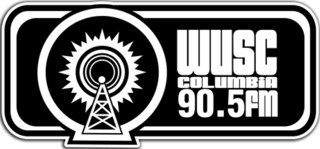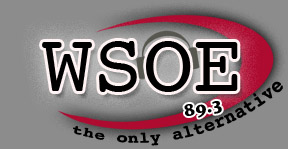
Phelps County is a county in the central portion of the U.S. state of Missouri. As of the 2020 United States Census, the population was 44,638. The largest city and county seat is Rolla. The county was organized on November 13, 1857, and was named for U.S. Representative and Governor of Missouri John Smith Phelps.

Rolla is a city in, and the county seat of, Phelps County, Missouri, United States. Its population in the 2020 United States Census was 19,943. It is approximately midway between St. Louis and Springfield along I-44. Its micropolitan statistical area consists of Phelps County, Missouri. Nearby is an inactive township.

The University of Missouri System is an American state university system providing centralized administration for four universities, a health care system, an extension program, and ten research and technology parks. Over 61,500 students are currently enrolled at its four campuses. The health care system operates several hospitals and clinics in central Missouri, while the extension program provides distance learning and other educational initiatives statewide.

WHRW is Binghamton University's non-profit, student-run, free-format radio station. The station is licensed and owned by Binghamton University, serving the New York college area. WHRW has operational facilities in Glenn G. Bartle Library Tower and in SUNY Binghamton Student Union.

WUSC-FM is a student-run college radio station operating at the University of South Carolina in Columbia, South Carolina.
WCUA is the college radio station broadcast from The Catholic University of America. Due to a lack of a license to broadcast at their designated frequency at 97.5 MHz FM and how the antenna is located at a building different from the studio, the station currently only broadcasts over the internet at their website.

Hildreth Meière (1892–1961) was an American muralist active in the first half of the twentieth century who is especially known for her Art Deco designs. During her 40-year career she completed approximately 100 commissions. She designed murals for office buildings, churches, government centers, theaters, restaurants, cocktail lounges, ocean liners, and world’s fair pavilions, and she worked in a wide variety of mediums, including paint, ceramic tile, glass and marble mosaic, terracotta, wood, metal, and stained glass. Among her extensive body of work are the iconographic interiors at the Nebraska State Capitol in Lincoln, the dynamic roundels of Dance, Drama, and Song at Radio City Music Hall, the apse and narthex mosaics and stained-glass windows at St. Bartholomew's Episcopal Church (Manhattan), and the decoration of the Great Hall at the National Academy of Sciences in Washington, D.C.

WSOE is a non-commercial student-run college radio station based at Elon University in Elon, North Carolina, that broadcasts at 89.3fm. The station serves as a creative outlet for students and as a means for students to develop skills for professional broadcast careers. WSOE offers a variety of opportunities in music shows, sports broadcasting, artist interviews, and music technology. The station aims to promote local artists through ticket giveaways, interviews, and playing these musicians' music over the air.
Leeds Student Radio is a student radio station broadcasting every day during term time from Leeds University Union at the University of Leeds.
WUAG is a radio station broadcasting a variety format. Licensed to Greensboro, North Carolina, United States, the station serves the Piedmont Triad area. The station is currently owned by the University of North Carolina at Greensboro.

WOBC-FM is a non-commercial educational radio station licensed to serve Oberlin, Ohio, carrying a mixed freeform and community format. Owned by Oberlin College, the station services Lorain County and western parts of Greater Cleveland. The WOBC-FM studios and transmitter are located on the Oberlin College campus at Wilder Hall. In addition to a standard analog transmission, WOBC-FM is available online.
WTJU is a variety-formatted broadcast radio station licensed to Charlottesville, Virginia, serving Charlottesville and Albemarle County, Virginia. WTJU is owned and operated by the University of Virginia.
KMST is a radio station licensed to Rolla, Missouri, and operated by the University of Missouri at St. Louis as an extension of St. Louis Public Radio. The station broadcasts at 88.5 MHz FM with an effective radiated power of 100,000 watts, making it the most powerful public radio station in south-central Missouri.
KMSM-FM is a radio station licensed to serve Butte, Montana. The station is owned and operated by Cameron Maxwell, through licensee Desert Mountain Broadcasting Licenses LLC, and airs an active rock format.

Fuse FM is a student radio station broadcasting every day during term time from Manchester Students' Union at the University of Manchester.

Missouri University of Science and Technology is a public research university in Rolla, Missouri. It is a member institution of the University of Missouri System. Most of its 6,456 students (2023) study engineering, business, sciences, and mathematics. Known primarily for its engineering school, Missouri S&T offers degree programs in business and management systems, information science and technology, sciences, social sciences, humanities, and arts. It is classified as a "STEM-dominant", R2 doctoral university with "high research activity".

The University of Missouri–St. Louis (UMSL) is a public research university in St. Louis, Missouri, United States. Established in 1963, it is the newest of the four universities in the University of Missouri System. Located on the former grounds of Bellerive Country Club, the university's campus stretches into the municipalities of Bellerive, Bel-Nor and Normandy. Additional facilities are located at the former site of Marillac College and at Grand Center, both in St. Louis city.

James Duard Marshall was a painter, lithographer, museum director, and art conservator who lived most of his life in Kansas City. Duard [pronounced "doo-erd"] was a student of Thomas Hart Benton and is best known for his 30-foot mural created for the centennial of Neosho, Missouri in 1939. The civic leaders of Neosho had approached Benton to produce the mural, as Benton had been born in Neosho, but he suggested that his student Marshall do the job. That mural hangs in the Neosho Newton County Library.

































